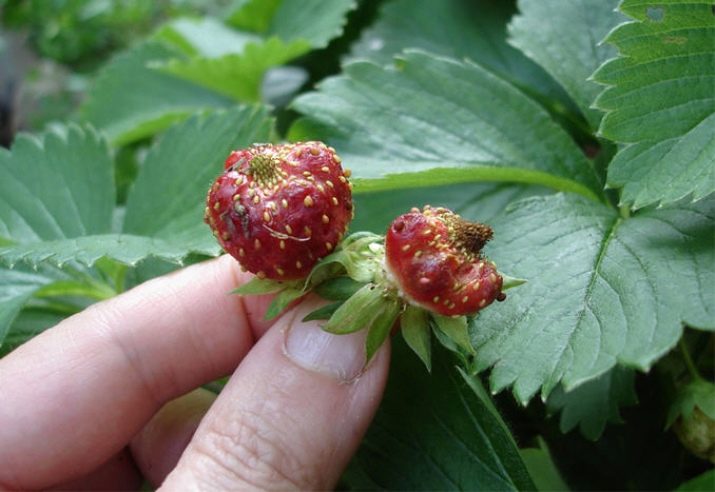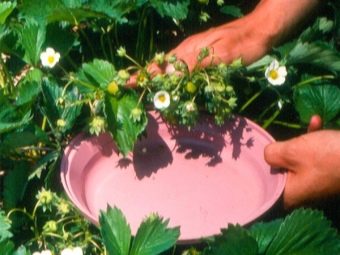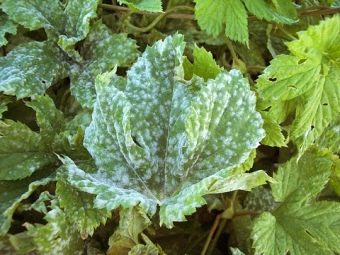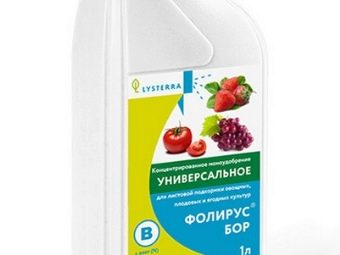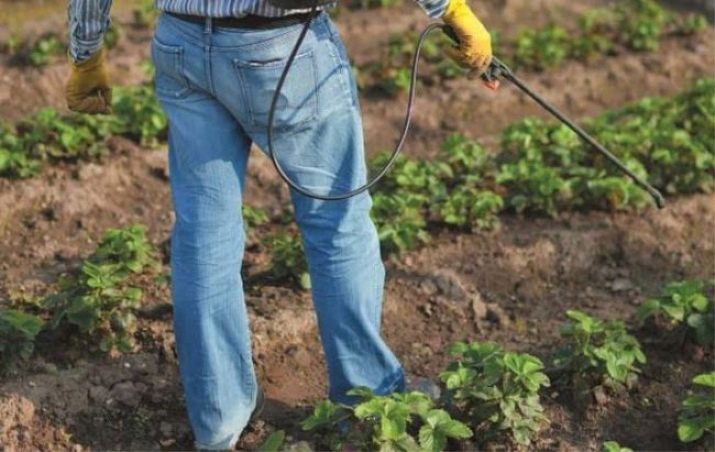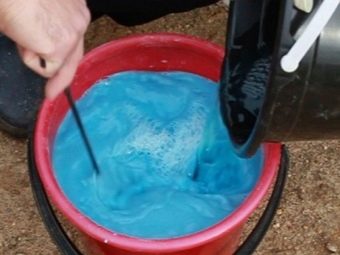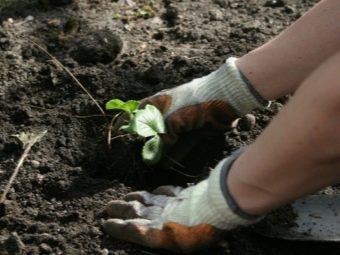Why are strawberries clumsy, small, and what to do about it?
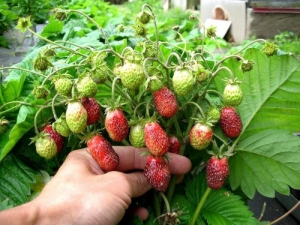
It is a shame to every gardener after a well-thought-out planting of strawberries and quality care to find small and gnarled berries on the site. To remedy the situation and avoid such a crop, it is worth finding out the reasons for the deformation of the berries.
The reasons
Small crooked fruits with damaged shapes can form for several reasons.
- Second year. Usually young plants bear fruit well in the first year. Next season, a gardener who did not take certain measures in a timely manner could hardly expect a good harvest.
- The lack of boron. This cause can be indicated by longitudinal strips in the form of cuts on the berries, as well as the yellow framing on the leaves and their torsion. This is possible when the culture is overfed with nitrogen or during a dry summer.
- Bedbug. This insect lays eggs in flowers, and the larvae born to feed on the fruits of the plant. As a result, the berries become shriveled.
- Frosts. If the central part of the flower is darkened, then this indicates that the culture has suffered from the cold.
- Mealy dew. One of the most common diseases of this culture. About the presence of the disease can speak torsion of the leaves. They form a raid, the leaves become purple. Because of the disease full-time pollination is impossible, and because the berries become clumsy and covered with bloom.
What to do
To save the harvest, experienced gardeners advise to resort to the following measures.
If the cause of small berries was the age of the plant for more than one year, then it is worth rooting several daughter shoots and replacing the mother samples. To do this, proceed as follows.
- In July, we select a pair of healthy shoots from the most productive bushes.
- We decompose the selected mustache along the edges of the plot, eliminating unnecessary specimens.
- When the sockets begin to take root on the sprouts after 2 weeks, it is necessary to proceed to a thorough regular weeding, loosening and watering.
- In early August, carefully separate the shoots from the parent bush, divide the outlet and transplant in fertile soil.
- A week later, transplant bush on a permanent site.
- In September, we eliminate damaged unhealthy leaves, sprinkle with Folirus and leave the plant to hibernate under mulch.
- In the spring we free the crop from under the mulch and process the bushes with Folirus once every 14 days.
If the cause of the ugly small berries was a lack of boron, then a special remedy, Folirus Bor, will help to correct the situation. The advantage of the composition is the possibility of its use immediately, even during fruiting.
The fact is that this tool is not a pesticide, but it enhances the process of fruit formation, and also makes the berries larger, sweeter and more sugary.
If the plant is damaged by a blind bug, then you can use insecticides, but it is better to do it only before the flowering period. The impact of chemicals has a negative impact not only on the quality of the berries, but also on beneficial insect pollinators. The safest remedy is organophosphate. In addition, you can use the following methods.
- Taking the capacity of a light color with water, you can just shake the bush above the container. Insects themselves will fall to the bottom, and the water will not allow them to quickly get out. Further pests should be destroyed.
- Another way is a distracting trap. For example, blind-bugs love alfalfa very much. This plant is even more tasty for them than strawberries. Thus, alfalfa can be an effective bait.
- If the berries are deformed due to cold snap, then the plant's immunity must be strengthened. For example, you can make a comprehensive fertilizer on the sheet. Protective covering material will also protect the culture from spring frosts.
- If the plant has overcome powdery mildew, then you can turn to the help of insecticides. It is important to avoid use on flowering bushes. A total of three treatments are required — during the formation of the first leaves, before the start of blooming of the inflorescences and after harvesting. The most effective are such means as Topaz, Bayleton, Euparin, Switch, Horus.
Useful tips
To avoid a meager harvest with small and ugly berries, experienced gardeners recommend to listen to the following simple tips on planting culture.
- Before planting, seedlings should preferably be treated in a solution of copper sulphate in a ratio of 100 g per 10 liters of water. Hold in the mixture for about 3 minutes and rinse the seedlings well with water.
- It is necessary to avoid planting in areas where tomatoes, potatoes, and sunflowers were previously grown. The most preferred precursors are greens, legumes, and cereals.
- The correct scheme of planting - the location of seedlings at a distance of 10-15 cm from each other. Close-set specimens will fight with each other for moisture and sun instead of spending all their energy on the formation of high-quality berries.
- Do not carefully weed the bed. In the presence of a small amount of weeds, the plant will more easily tolerate arid summer.
- The maximum term of cultivation on one site - 4 years. After this period, the plant must be transplanted, otherwise the harvest will no longer please the summer resident.
How to treat strawberries for diseases and get rid of pests, see below.

